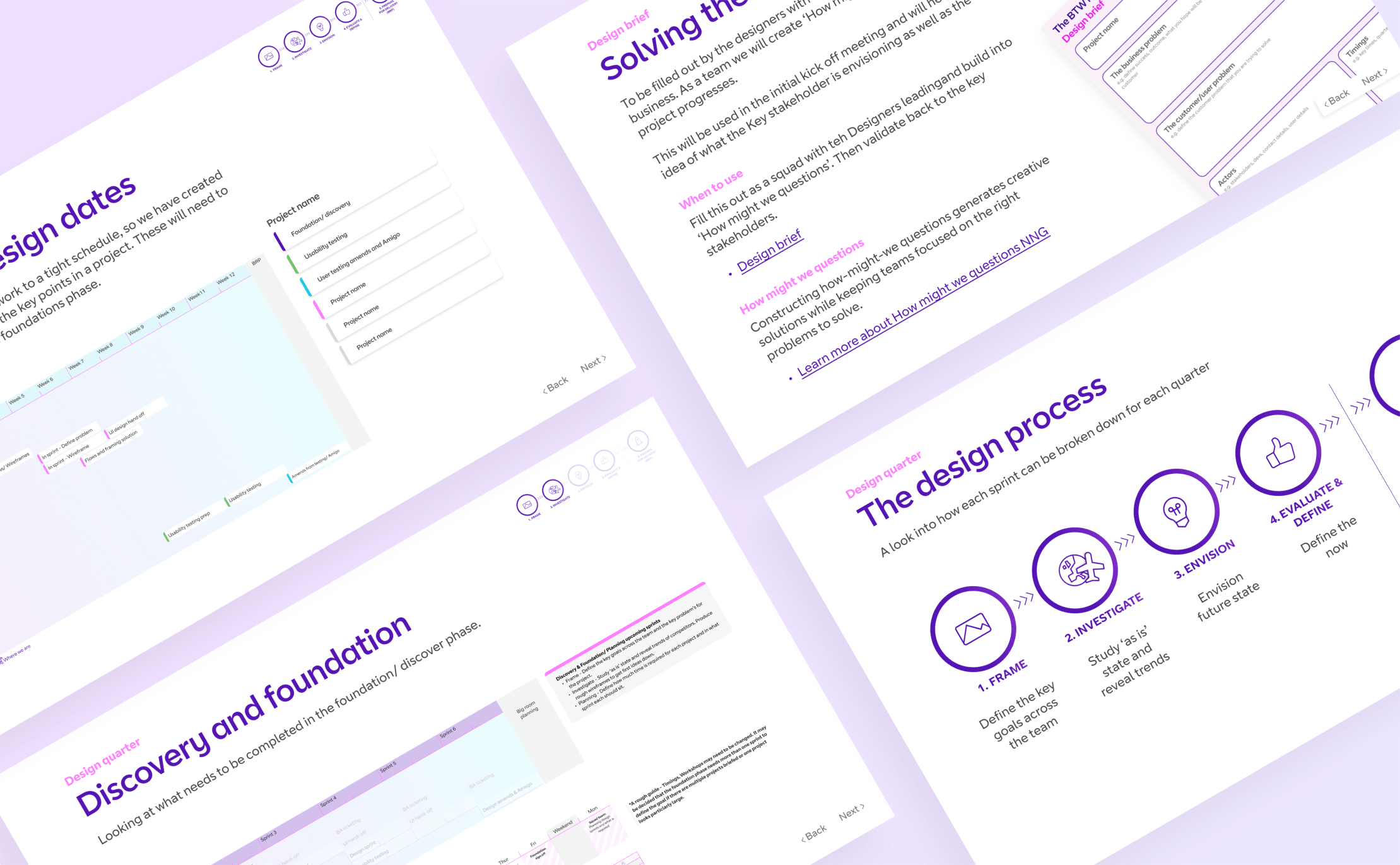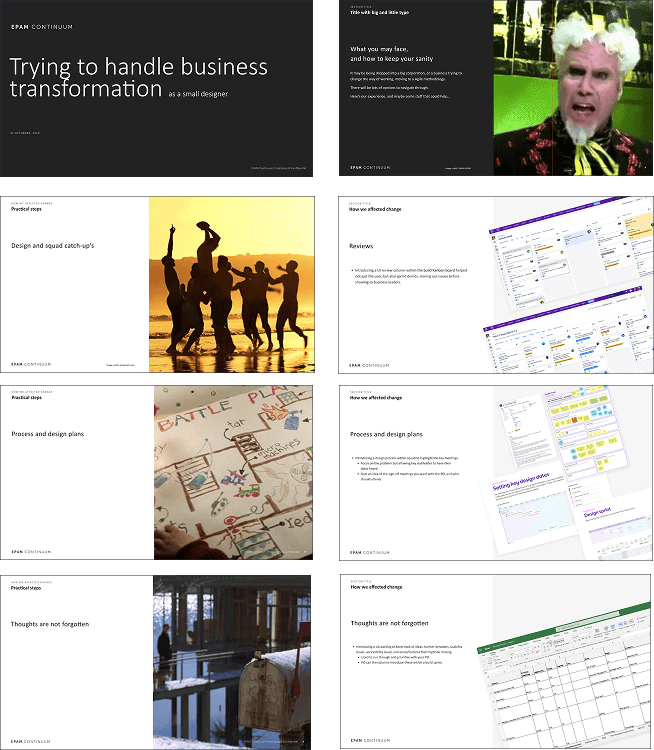BT Wholesale squad design process
Defining a clear design process within BT Wholesale’s tribe, creating structure, tools, and workshops to align stakeholders and bring design into sprint planning.
Problem: No clear way to integrate design into sprint planning; briefs arrived vague and goals often shifted.
My role: Defined a structured sprint design process, led workshops, created worksheets, introduced a design backlog, and co-created a usability testing playbook.
Results: Stakeholders gained visibility and alignment, briefs became clearer, and the process and playbook were adopted as lightweight standards across teams.
Skills used: Leading workshops | Team leadership | UI design
The problem
Within the tribe there wasn’t a clear way of integrating design into sprint planning. Design briefs often arrived late or incomplete, leaving goals vague and priorities shifting. This meant design was too often reacting, rather than shaping solutions with the business.
The solution
I introduced a more structured design process that shifted conversations from “what solution do you want?” to “what problem are we solving?” This included:
Process mapping: Researched design practices across EPAM and other companies, then created a swim-lane process showing key design phases, workshops, and decision points aligned to sprint planning.
Workshops & worksheets: Introduced new worksheets to help break down stakeholder briefs into How might we questions, enabling focused ideation and Crazy 8s. A colleague’s planning sheet was also adapted for big-room planning.
Design backlog: Established a design backlog with UX and content peers, capturing everything from usability fixes to major feature gaps. Used MoSCoW prioritisation with the PO to ensure alignment with business priorities.
Usability testing playbook: Together with two colleagues, I created a playbook to help teams consistently plan, run, and share findings from usability testing. This showcased tools, step-by-step ways of working, and lightweight templates that could be reused across different squads.
User research toolkit: As a side project, I also developed a workbook to help other tribes define what to test, capture results, and share findings without relying on lengthy slide decks.
My role
Co-created a sprint design framework with the PO and BAs.
Led workshops and shared the process with stakeholders to build buy-in.
Designed worksheets and tools to turn vague briefs into actionable problems.
Built the design backlog and prioritisation method with the squad.
Co-authored the usability testing playbook with colleagues.
Created a reusable usability testing workbook for wider teams.
Sharing back to EPAM
Within the UK design team, we wanted to share our experiences of being embedded in a corporate team where the project scope wasn’t run or managed by EPAM. By presenting back our learnings, we highlighted the small adjustments that help bring projects back on track and make daily work smoother and more productive.
We then opened the floor to the wider design team, encouraging them to share insights from other clients. This helped drive a broader conversation around consistency and commitment to excellence within EPAM’s design practice — something any team or individual could champion for collective success.
Outcome
The design process gave stakeholders clearer visibility of when and how design would be involved. It provided the squad with a shared way of working, reduced the number of vague briefs, and ensured sprint planning started with clearer goals.
The usability testing playbook and research toolkit became practical resources other squads could pick up, saving time and embedding a consistent approach to user testing. The internal sharing sessions at EPAM also seeded a stronger design culture across projects.




